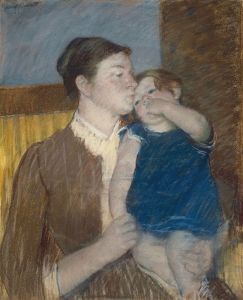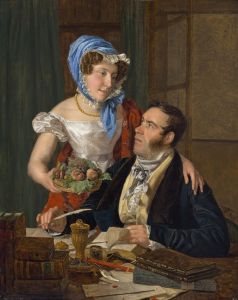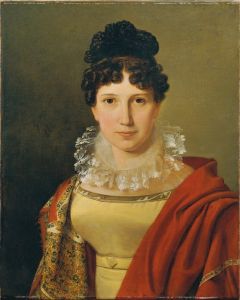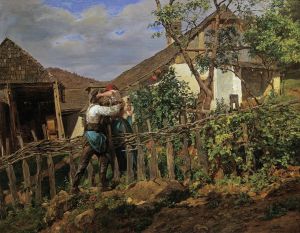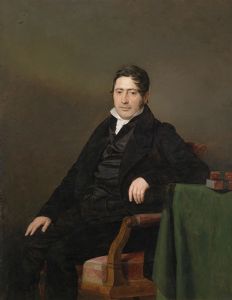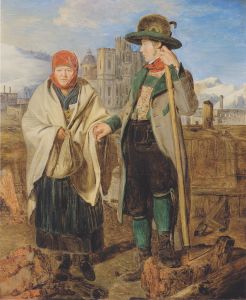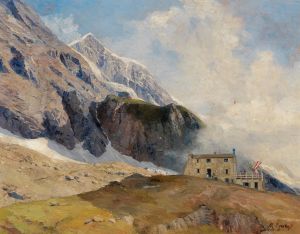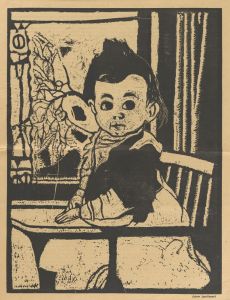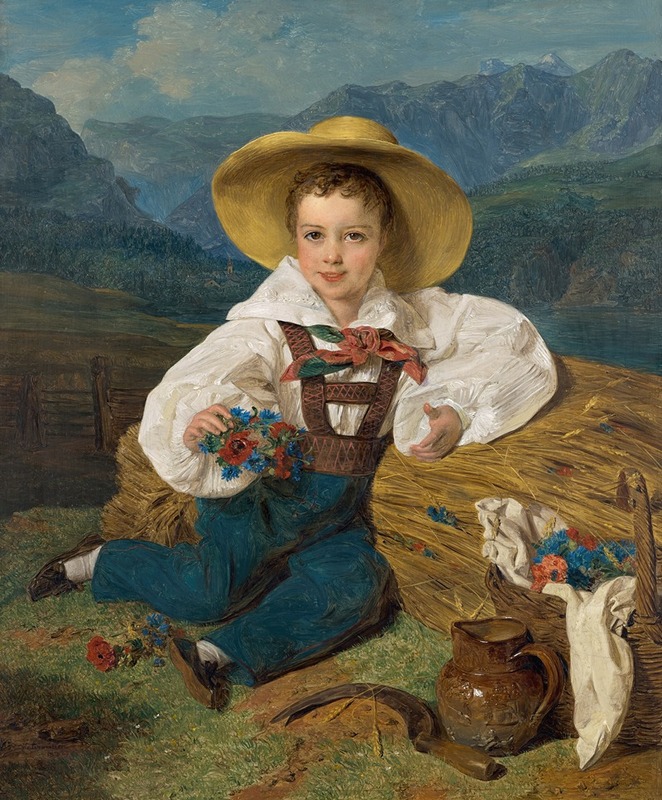
Graf Demetrius Apraxin als Kind vor einer Berglandschaft
A hand-painted replica of Ferdinand Georg Waldmüller’s masterpiece Graf Demetrius Apraxin als Kind vor einer Berglandschaft, meticulously crafted by professional artists to capture the true essence of the original. Each piece is created with museum-quality canvas and rare mineral pigments, carefully painted by experienced artists with delicate brushstrokes and rich, layered colors to perfectly recreate the texture of the original artwork. Unlike machine-printed reproductions, this hand-painted version brings the painting to life, infused with the artist’s emotions and skill in every stroke. Whether for personal collection or home decoration, it instantly elevates the artistic atmosphere of any space.
Ferdinand Georg Waldmüller was a prominent Austrian painter in the 19th century, known for his contributions to the Biedermeier period, a style that emphasized realism and detail. One of his notable works is "Graf Demetrius Apraxin als Kind vor einer Berglandschaft," which translates to "Count Demetrius Apraxin as a Child before a Mountain Landscape." This painting exemplifies Waldmüller's skill in portraiture and landscape painting, showcasing his ability to capture both the likeness of his subjects and the beauty of the natural world.
The painting features a young Count Demetrius Apraxin, a member of the Russian nobility, positioned against a backdrop of a mountainous landscape. Waldmüller was known for his meticulous attention to detail, and this work is no exception. The child's features are rendered with precision, highlighting Waldmüller's talent in capturing the innocence and charm of youth. The landscape behind the child is equally detailed, with the mountains depicted in a way that conveys both their majesty and tranquility. This combination of portrait and landscape is characteristic of Waldmüller's work, as he often sought to integrate his subjects harmoniously with their surroundings.
Waldmüller's approach to painting was influenced by his belief in the importance of studying nature directly. He often painted en plein air, or outdoors, which allowed him to observe and capture the nuances of light and color in the natural environment. This practice is evident in "Graf Demetrius Apraxin als Kind vor einer Berglandschaft," where the interplay of light and shadow adds depth and realism to the scene. The natural setting not only serves as a backdrop but also enhances the overall composition, creating a sense of unity between the subject and the environment.
The choice of a mountainous landscape may have been significant, as it reflects the Romantic fascination with nature's grandeur and the sublime. During the Biedermeier period, there was a growing interest in depicting the natural world, and artists like Waldmüller played a crucial role in this movement. His landscapes are celebrated for their clarity and precision, qualities that are evident in this painting.
Waldmüller's work was highly regarded during his lifetime, and he received numerous commissions from the aristocracy and bourgeoisie. His ability to capture the essence of his subjects, combined with his skillful rendering of landscapes, made him a sought-after portraitist. "Graf Demetrius Apraxin als Kind vor einer Berglandschaft" is a testament to his artistic prowess and his contribution to the development of 19th-century Austrian art.
Today, Waldmüller's paintings are appreciated for their historical and artistic value, offering insights into the cultural and social contexts of his time. His works are held in various collections and continue to be studied and admired by art historians and enthusiasts alike. "Graf Demetrius Apraxin als Kind vor einer Berglandschaft" remains an exemplary piece within his oeuvre, illustrating his mastery of both portraiture and landscape painting.





